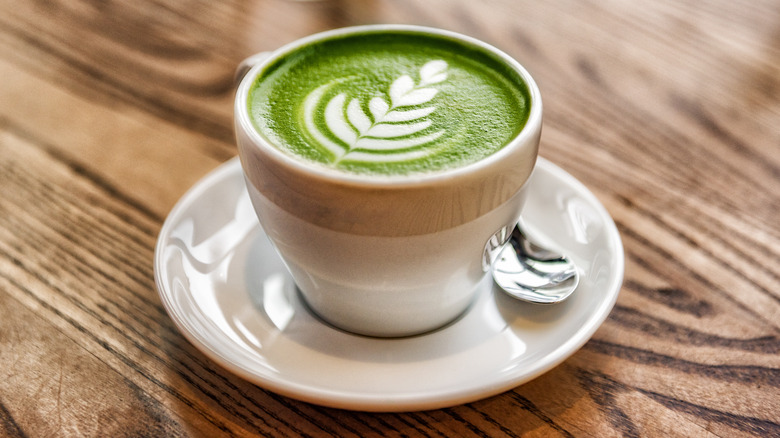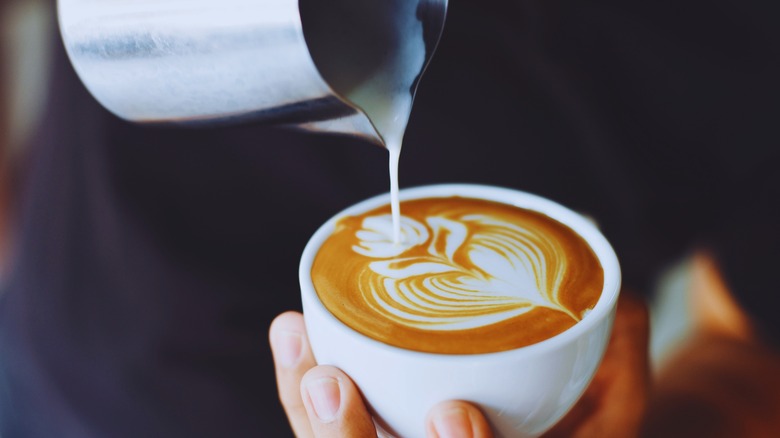A Barista Weighs In On The Best Milk To Use For Latte Art
Even the most committed coffee and tea lovers aspiring to make cafe-quality lattes at home struggle with perfecting beautiful latte art. Sure, you can make better latte foam in the microwave or spend the money on a fancy milk steamer, but according to Jee Choe, starting with the right kind of milk is the first thing you can do to set yourself up for success. Choe is a coffee and tea specialist, and the person behind the blogs Oh, How Civilized and Coffee At Three. Whether she is swirling foamed milk on top of matcha or espresso, Choe knows what she is doing.
For her, fresh whole milk is the ideal base if impressive latte art is what you are after. "It creates the best microfoam and texture due to dairy milk's optimal fat and protein ratio," Choe explains. Full-fat milk produces a microfoam that is dense and thick with small bubbles but is still pourable. Dairy milks with lower fat contents create a foam that is too stiff, so it becomes hard to pour into patterns.
That means the worst milk to use when attempting beautiful latte art would be something non-fat. Dairy milk itself is basically a stable emulsion of water and fat. Because it does not quickly separate, it is easier to incorporate the bubbles necessary to make a foam. The high amount of fat and protein is why whole milk works so well. Per cup, it has about eight grams each of fat and protein.
What is the best dairy-free milk for latte art?
Regardless of type, dairy-free has less fat and protein than whole milk, and different types and brands will have varying ratios. It means that it is less predictable than dairy milk, so it can be harder to work with. Non-dairy milk can also be quite sensitive to heat from the steamer. That is why Jee Choe says, "For the best non-dairy milk options, look for the word 'barista' on the packaging." These are specifically "formulated to steam like dairy milk," she explains. They contain additional fat and stabilizers that result in a better foam, which is exactly you need if you are creating
There is not one particular dairy-free milk that rises above the rest consistently. Different baristas favor various types, but oat milk tends to fare well. Soy, hemp, and nut milks are also good choices. Coconut milk, despite the creamy richness, actually is not a great choice. The lack of protein means that it does not have the structure to hold onto the bubbles that make up the foam, so it is not able to maintain any volume.
No matter which vegan milk you try, definitely follow Choe's advice and seek out the products that are specially formulated for baristas, so you can create latte art at home. After all, we eat — and drink — with our eyes first.


